I want to generate code (Python for now, but ultimately C) from a trained gradient boosted classifier (from sklearn). As far as I understand it, the model takes an initial predictor, and then adds predictions from sequentially trained regression trees (scaled by the learning factor). The chosen class is then the class with the highest output value.
This is the code I have so far:
def recursep_gbm(left, right, threshold, features, node, depth, value, out_name, scale):
# Functions for spacing
tabs = lambda n: (' ' * n * 4)[:-1]
def print_depth():
if depth: print tabs(depth),
def print_depth_b():
if depth:
print tabs(depth),
if (depth-1): print tabs(depth-1),
if (threshold[node] != -2):
print_depth()
print "if " + features[node] + " <= " + str(threshold[node]) + ":"
if left[node] != -1:
recursep_gbm(left, right, threshold, features, left[node], depth+1, value, out_name, scale)
print_depth()
print "else:"
if right[node] != -1:
recursep_gbm(left, right, threshold, features, right[node], depth+1, value, out_name, scale)
else:
# This is an end node, add results
print_depth()
print out_name + " += " + str(scale) + " * " + str(value[node][0, 0])
def print_GBM_python(gbm_model, feature_names, X_data, l_rate):
print "PYTHON CODE"
# Get trees
trees = gbm_model.estimators_
# F0
f0_probs = np.mean(clf.predict_log_proba(X_data), axis=0)
probs = ", ".join([str(prob) for prob in f0_probs])
print "# Initial probabilities (F0)"
print "scores = np.array([%s])" % probs
print
print "# Update scores for each estimator"
for j, tree_group in enumerate(trees):
for k, tree in enumerate(tree_group):
left = tree.tree_.children_left
right = tree.tree_.children_right
threshold = tree.tree_.threshold
features = [feature_names[i] for i in tree.tree_.feature]
value = tree.tree_.value
recursep_gbm(left, right, threshold, features, 0, 0, value, "scores[%i]" % k, l_rate)
print
print "# Get class with max score"
print "return np.argmax(scores)"
I modified the tree generating code from this question.
This is an example of what it generates (with 3 classes, 2 estimators, 1 max depth and 0.1 learning rate):
# Initial probabilities (F0)
scores = np.array([-0.964890, -1.238279, -1.170222])
# Update scores for each estimator
if X1 <= 57.5:
scores[0] += 0.1 * 1.60943587225
else:
scores[0] += 0.1 * -0.908433703247
if X2 <= 0.000394500006223:
scores[1] += 0.1 * -0.900203054177
else:
scores[1] += 0.1 * 0.221484425933
if X2 <= 0.0340005010366:
scores[2] += 0.1 * -0.848148803219
else:
scores[2] += 0.1 * 1.98100820717
if X1 <= 57.5:
scores[0] += 0.1 * 1.38506104792
else:
scores[0] += 0.1 * -0.855930587354
if X1 <= 43.5:
scores[1] += 0.1 * -0.810729087535
else:
scores[1] += 0.1 * 0.237980820334
if X2 <= 0.027434501797:
scores[2] += 0.1 * -0.815242297324
else:
scores[2] += 0.1 * 1.69970863021
# Get class with max score
return np.argmax(scores)
I used the log probability as F0, based on this.
For one estimator it gives me the same predictions as the predict method on the trained model. However when I add more estimators the predictions start to deviate. Am I supposed to incorporate the step length (described here)? Also, is my F0 correct? Should I be taking the mean? And should I convert the log-probabilities to something else? Any help is greatly appreciated!
